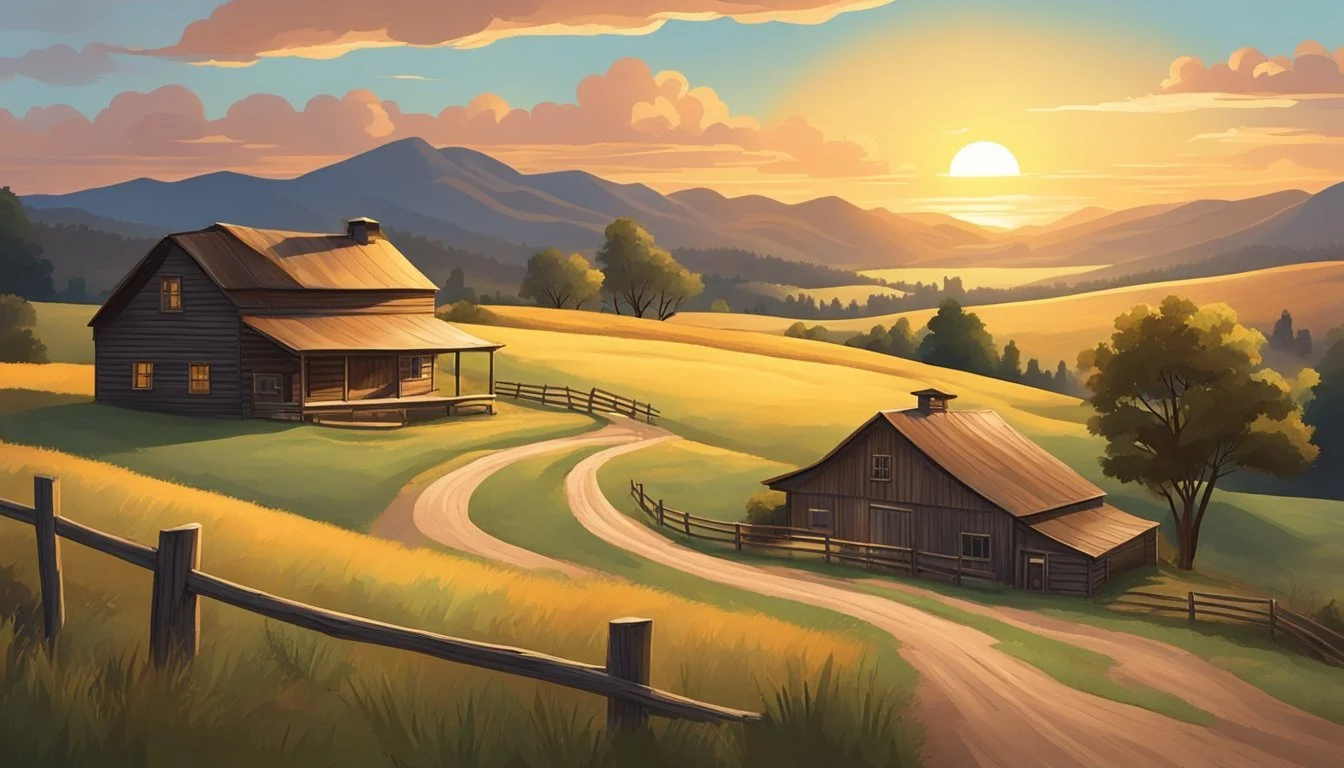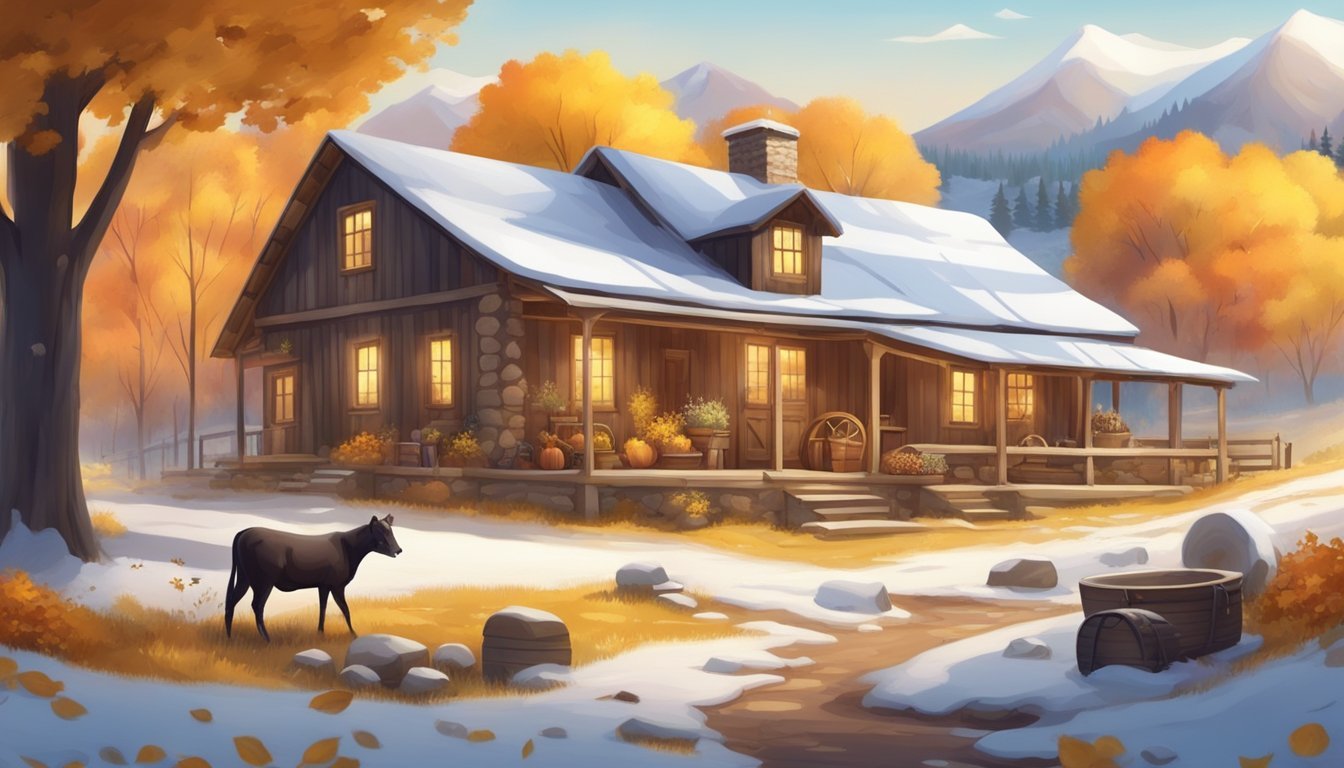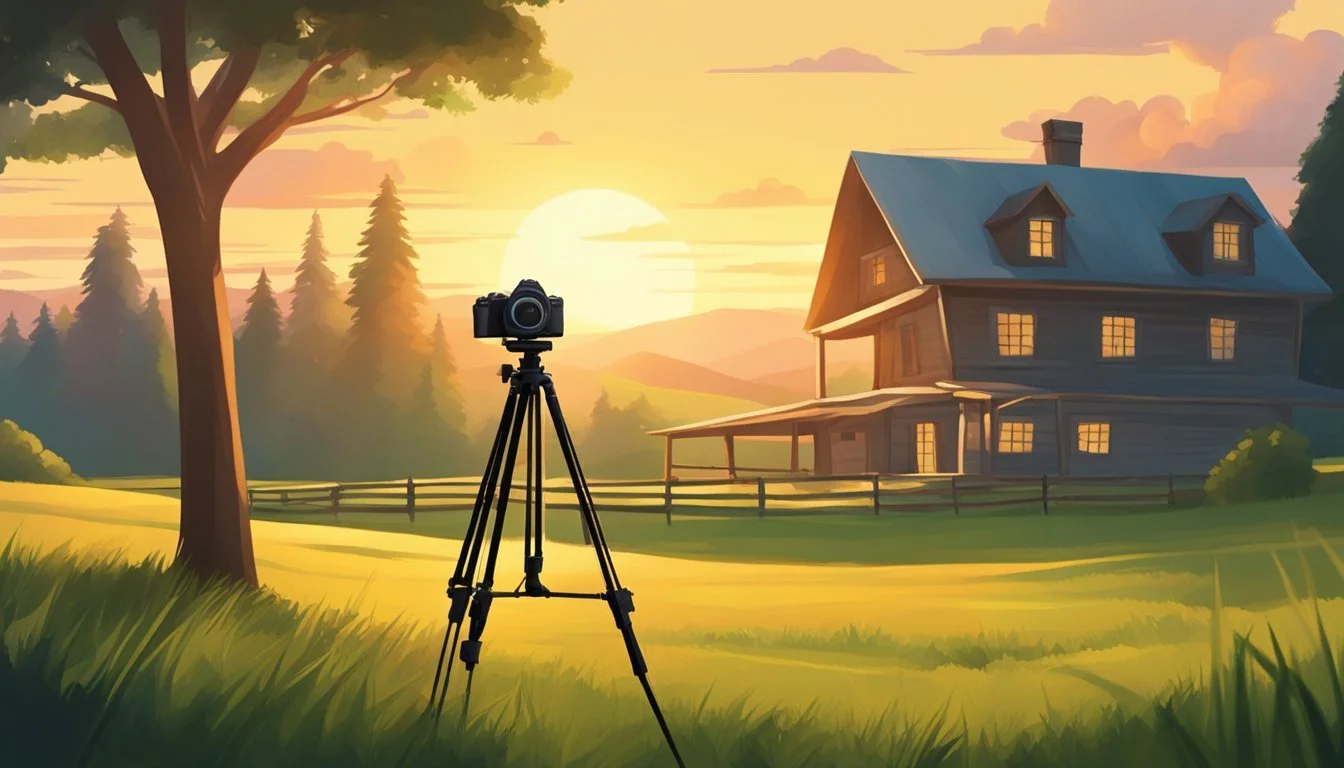Homestead Photography
Capturing the Essence of Self-Sufficient Living
Homestead photography is a practice that turns the daily rhythms of rural life into a visual story. As homesteaders cultivate the land and raise livestock, their actions weave a narrative of hard work, close-knit family values, and self-sufficiency. Photographs capture the transformative process, from tilling the soil to harvesting the crops, preserving these memories and milestones that might otherwise go undocumented. Through the lens, every chore becomes a significant moment, telling a tale of dedication and connection to the land.
Capturing these experiences requires more than just a camera; it demands an eye for detail and an appreciation for the unique beauty found in every aspect of homesteading. Practical photography tips can help document this journey. Learning to play with light, understanding composition, and choosing the right moments can elevate ordinary snapshots into evocative, storytellers of homestead life. Photographers of all skill levels can harness these techniques to chronicle their progress and capture the essence of their labors.
As the seasons change, so too do the subjects of these photographs, from the vibrant green of spring to the golden hues of harvest time. Homestead photography not just chronicles the cyclical nature of farm work, but also becomes a historical record for future generations. It allows families to reflect upon their journey, appreciate their growth, and share their accomplishments with a wider audience, fostering a deeper connection with others who share an appreciation for the homesteading way of life.
Getting Started in Homestead Photography
Embarking on the journey of homestead photography, one needs to grasp the fundamentals and select appropriate tools to capture the true essence of homestead life.
Understanding the Basics
A foundational understanding of photography principles is critical for taking engaging pictures on the homestead. Awareness of composition techniques, such as the rule of thirds and leading lines, can greatly enhance the visual appeal of photographs. It's important to note how natural lighting conditions affect shots, with the golden hours at sunrise and sunset providing particularly flattering light for landscapes and outdoor scenes.
Choosing the Right Equipment
Selecting the right camera equipment is paramount for homestead photography. A DSLR camera is often the preferred choice for its versatility and superior image quality. When considering a DSLR, one should evaluate the sensor size, as a full-frame sensor allows for better performance in low light and a shallower depth of field.
Lens: Diverse lenses offer flexibility; a versatile zoom lens is practical for various shooting needs.
Tripod: A sturdy tripod ensures sharp images, especially in low-light conditions or for long exposures.
Critical for capturing the minute details and grandeur of homestead expanses are lenses. The choice of lens, be it a wide-angle lens for expansive landscapes or a macro lens for close-up details of homestead life, influences the narrative of the imagery. A tripod is an often overlooked yet essential accessory; it stabilizes the camera for clear, sharp images, and is particularly useful when documenting processes over time or shooting in variable light conditions.
Composition Techniques for Capturing the Essence of Homestead Life
Capturing the essence of homestead life requires a keen eye for composition, harnessing techniques that bring forward the vivid storytelling elements of rural living. Here are some methodologies to consider promoting the very soul of homestead imagery.
The Rule of Thirds
The Rule of Thirds is foundational in homestead photography. By dividing the frame into a three-by-three grid and aligning the subject along these lines or their intersections, photographers enhance the visual interest of the homestead setting. Strategic placement of the farmhouse, for instance, at one of these points can create balanced, dynamic images that guide the viewer’s eye throughout the scene.
Utilizing Leading Lines and Depth
Photographers employ leading lines and depth to navigate the viewer’s focus through the photograph, creating a journey that mirrors the homestead's environment. Furrows in a tilled field or a meandering fence can draw the eye to the homestead as a focal point, adding a perception of depth which makes the scene come alive. This technique builds a narrative, suggesting a connection between the foreground and the background elements of rural landscapes.
Framing and Background Considerations
Effective use of framing can emphasize the rustic charm of homestead life. Whether through an overhanging branch or an open barn door, framing can serve to highlight the central subject. It’s important to be mindful of the background as well; a cluttered or distracting backdrop can detract from the main subject. Instead, one should opt for a background that complements and reinforces the story of the homestead, such as a clear sky or a serene pasture.
Photography Through the Homesteader's Year
Through the lens of a camera, homesteaders can chronicle the profound seasonal transformations and the array of activities that punctuate the year. This visual diary not only preserves memories but also showcases the dynamic nature of homestead life.
Seasonal Changes and Activities
In spring, the budding of plants and birth of farm animals presents an opportunity to document renewal on the homestead. Each frame can capture the vivid greens of new foliage and the energetic activity as homesteaders prepare their land for planting. Photography during this time often involves lively scenes of gardening, installing fences, and outdoor construction.
When summer arrives, the homestead blossoms with life. Photographers can focus on the growth and health of crops, the hustle of harvesting, and the vibrant interaction between sunlight and the landscape. This season is also prime for showcasing the water management systems and energy utilized to maintain the land during warmer months.
As autumn paints the homestead in warm tones, homesteaders engage in preserving harvests, preparing for winter, and enjoying the bounty of their efforts. Photos taken during harvest time emphasize the rich colors of fall, the gatherings of produce, and the community activities that often occur on homesteads.
Winter brings a quieter but equally poignant beauty to the homestead. With snow blanketing the grounds, photographers capture the serene and stark aspects of the land. Images of snow-covered barns, footprint trails, and the contrast of dark branches against white skies tell the story of endurance and tranquility during the cold months.
Capturing the Golden Hour
The golden hour—the period shortly after sunrise or before sunset—offers homestead photographers a dramatic natural filter that enhances the beauty of their subjects. The soft, warm light during these times can transform mundane tasks into picturesque moments. For instance, the way the golden sunlight illuminates a homesteader tending to their garden can elevate the everyday into something magical.
Photographers should plan their shoots during this time to maximize the potential of natural light. Whether capturing the long shadows cast by fencing or the glow enveloping a herd of sheep, the golden hour brings a unique depth and emotion to the landscapes and activities on a homestead.
Diversifying Your Portfolio
Expanding the variety in a photography portfolio is essential for showcasing versatility and attracting interest. A homestead offers numerous opportunities to capture a rich tapestry of images that can enhance the depth and breadth of your creative work.
Incorporating Animals in Your Photos
Animals bring life and energy to homestead photographs. Showcasing a variety of species and breeds adds a dynamic aspect to your portfolio. When photographing animals, one should focus on capturing their behavior and interaction with the environment, which often requires patience and timing. For example, a photo series revealing the daily routines of free-range chickens not only tells a story but also provides a glimpse into the sustainable practices of a homestead.
Capturing Different Perspectives
Viewing the homestead through different lenses and angles can significantly diversify your photographic portfolio. Aerial shots, achieved through drone photography, offer a grand scale of the property, while close-up macro images highlight intricate details, such as the morning dew on a freshly sprouted seedling. By alternating between wide-angle vistas and intimate portraits of life on the homestead, a photographer can convey the vastness and nuance of rural living.
Post-Processing and Editing
In homestead photography, the artistry extends beyond the click of the shutter. Post-processing bridges the gap between the reality captured by the camera and the story the photographer wishes to tell.
Basic Editing Techniques
After photographing their homestead, photographers begin the editing process with some basic adjustments. This typically starts with cropping to compose the image more effectively or to remove unwanted elements. Adjusting the exposure can breathe life into photos that might look too dark or too bright as captured. Contrast enhancement is another fundamental step, which can make an image pop and adds depth to the scene.
Common Basic Adjustments:
Cropping: Reframe the subject
Exposure: Balance the image lighting
Contrast: Deepen shadows and highlight
Photographers may also adjust the white balance to ensure colors reflect the true tones present during the shoot, particularly important in documenting the sometimes whimsical lighting of domestic life.
Using Post-Processing to Enhance Stories
The powerful tools of post-processing software like Adobe Lightroom and Photoshop let photographers go beyond mere correction; they can also infuse photos with emotion or reflect the mood of the homestead. For instance, increasing clarity can sharpen the image, making textures of wood grains or fibers in handwoven fabrics stand out, while a slight vignette can focus attention on the central subjects, perhaps a cluster of freshly harvested vegetables or a family gathering.
Techniques for Story Enhancement:
Adjust Clarity: Enhances textures and details
Vignetting: Draws attention to the central subjects
Photographers often use reflections intentionally in their post-processing workflow to add depth or artistic flair. Mirror-like surfaces, water bodies, or windows can reflect important aspects of the homestead, subtly doubling their storytelling impact. Correctly exposed reflections can create a sense of place and underscore the homesteader’s connection to their environment.
Sharing Your Homestead Story
When documenting the homesteading journey, the objective is twofold: to create a compelling narrative through images and to share that narrative effectively, particularly through social media and various markets. This is about crafting a story that resonates and reaching an audience that appreciates the values and the authenticity of homestead life.
Creating a Narrative with Your Images
Photographs possess the unique ability to convey the essence of life on a homestead. One should focus on curating images that weave a story, capturing not just the broad strokes of homestead life but also the minute details: the morning dew on freshly harvested produce or the intricate patterns in hand-woven textiles. Here are some strategies for establishing a narrative:
Selecting Themes: A consistent theme can provide cohesion to the photographic journey. It can be seasonal changes, a specific crop cycle, or daily routines.
Chronological Progression: Displaying images in a chronological order can illustrate the growth and evolution of your homestead.
Documenting Challenges and Successes: A balanced portrayal of struggles and victories brings realism and depth to your story.
Utilizing Social Media and Markets
Social media is an invaluable tool for reaching out to like-minded individuals who might draw inspiration from your homestead experiences. Here’s how to effectively employ these platforms:
Develop a Content Plan: Regular posting schedules and themed content can help keep followers engaged and attract new audiences.
Engage with the Community: Responding to comments, sharing tips, and participating in relevant groups can build a loyal following.
If one's goal extends to monetization, tapping into niche markets can be lucrative. Market your homestead products, from fresh produce to handcrafted goods, by linking your travel photos and homestead story with item listings. Online marketplaces dedicated to artisanal and locally produced items are hotspots for customers seeking the authentic homestead experience. Carefully crafted imagery that tells the story of the product can significantly enhance its market appeal.
Advanced Techniques and Gear
To take homestead photography to a new level, experienced photographers leverage advanced techniques and invest in specialized equipment. Such practices allow for capturing the essence of rural life in more dynamic and detailed images.
Exploring Wide-Angle Shots
Wide-angle shots are essential in homestead photography for their ability to encompass expansive landscapes and structures, providing a sense of scale and immersion. Photographers often use wide-angle lenses to include as much of the scene as possible, which can make images feel more inclusive and welcoming. Such lenses typically have a focal length of about 35mm or less on a full-frame camera, and when used skillfully, they can create compelling compositions that draw the viewer into the photograph.
Investing in Advanced Equipment
Advanced equipment, including high-quality DSLR cameras and an array of lenses, is a critical investment for those serious about homestead photography. A photographer typically has a selection of lenses at their disposal, but for those looking to capture intricate details and textures on the homestead, macro lenses might be added to the kit. Additionally, DSLRs are preferred for their versatility, image quality, and the extensive selection of lenses available. Investing in durable, weather-resistant gear is also recommended, as homestead environments can be harsh on equipment.
Conclusion: Reflecting on Your Homestead Journey
Documenting the homesteading experience allows one to solidify memories that often become invaluable as the years progress. Through photography, these moments—the triumphs, the setbacks, and the everyday occurrences—take on a tangible form. They illustrate not just the change in the land but also in the individuals who cultivate it. Each image serves as a milestone marker, reflecting the grit and dedication that life on the homestead demands.
The act of taking photographs itself encourages homesteaders to move with intention and observe their surroundings with a keen eye. This reflective practice promotes a deeper connection with their environment, highlighting both the beauty and the practical challenges faced.
In looking back at the collection of photographs, homesteaders often find that they can track their growth and learning. The visuals have a story to tell, capturing the essence of the self-reliance and resilience that are fundamental to the homesteading ethos.
Key Takeaways:
Photographs serve as chronicles of personal and environmental evolution.
Reflective practices encourage mindfulness and connection with one's homestead.
Imagery allows for assessment and celebration of progress and milestones.
The journey of homesteading is unique to each individual, and so too are the memories they ensue to capture. By documenting the journey, they not only preserve their legacy but also inspire future generations to cherish the simplicity and reward that comes with this lifestyle.






